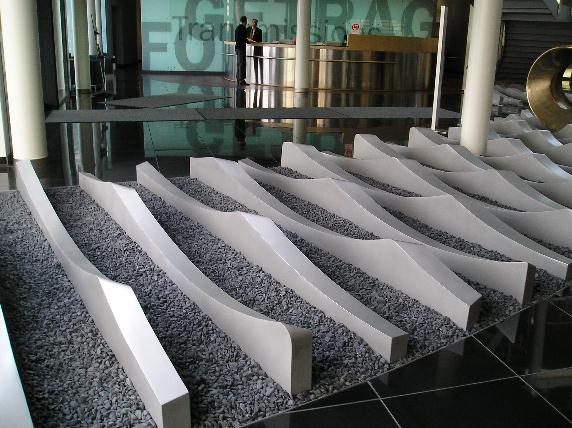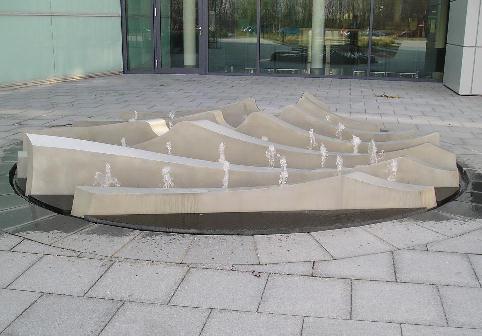works of art in aluminium
The great manual abilities of Czech craftsmen, combined with the large technical range of our company and the large machines
and the modern NC-process, are an ideal basis for the production of works of art in steel and non-metal materials like
aluminium.
Typically the customer has a first concept or sketch of the artist, and now our contribution is:
- In close cooperation with the artist, to transfer this concept into a design-drawing or shop-floor sketch that is fit for production. This cooperation can continue for several months, and there will be more sketches and maybe models in reduced format. Even the smallest details are important, so that the artistic aspects are fully integrated in the final product.
- To demonstrate and discuss the complete scope of different production methods for steel, aluminium and bronze in order to transmit the artistic idea , and to reach a common understanding with the artist and the final customer. When planning works of art, different from the process in industry, the important aspect is not the combination of high-efficiency with low-cost, but the best possible way to transmit the idea and concept of the artist.
Aim:
All visitors are received in the lobby, which is located in a 4-storey atrium of the Engineering Centre. This lobby shall contain a central water surface to distract waiting visitors and employees; at the same time the aim is to find a solution to prevent the evaporation of thousands of litres of water, which will condense at the top of the 4th floor and will cause wallpapers to warp and may cause a greenhouse climate.
Solution:
For a true Engineering company, the most direct solution at hand was to replace the water surface by a "wave-field" out of a high-tech material!
Aim:
The artist, who is an engineer and a computer-expert in the company itself, had designed the surface of the wave-field by computer-programs and had created a surface, where no wave was like any other. How to manufacture such difficult surfaces?
Solution:
In order to manufacture these different 3-dimensional surfaces, where the final surface is hand-polished and not machined, sand-castings with a final hand-polish instead of a milled surface, are the best solution, We manufactured individual patterns out of styrofoam, and the surface of the pattern was NC-machined in 5 axes. Thus we could transfer the artistic idea 1:1 info final castings with the final surface, which only needed hand-polishing, without leaving any traces of the original machined pattern.

Aim:
A further challenge was the sheer dimension of the wave-field: more than 60 waves, with single waves more than 5 meters in length, had to be produced. Which foundry was able to cast such large parts in aluminium?, at reasonable prices and with a short delivery date? The invitation cards to the inaugural celebration had already been printed; top-management from Detroit had booked the flights, and the Mayor of Cologne was already writing his opening speech! How to reach this close delivery time?
Solution:
in cooperation with our long-standing foundry for aluminium-castings, we manufactured extra long foundry-boxes, specially for this order, for single castings up to 6 m length. And we started immediately!
Aim:
Even for works of art, unnecessary cost should be avoided. If 60 waves of this size shall be cast in solid aluminium, the material alone will cost a fortune, although the visitor will only see the top 3% of the material!
Solution:
The 3-dimensional dataset of the artist was disassembled into 2 subsets: the 3-dimensional surface and the 2-dimensional sides. The 3-D-surface was then cast in sand, while the 2-D-sides were lasered; the final parts were then aluminium-welded carefully and finally optically polished ! The visitor will thus see the complete wave-field out of aluminium, but the waves are hollow from underneath and unnecessary cost was avoided!
Aim:
In order to find out, by artistic means, the difference between real water and computer-generated waves, the combination of both would be ideal, but how to do this?
Solution:
Outside the Engineering-Center, directly adjacent to the entry, the aluminium waves are part of a water-fountain; thus reality meets fiction, the perfect combination of both media!
